The Little Applegate River is one of the many gold-bearing rivers in Oregon. Gold has been mined here not long after the discovery of gold in California, and prospectors area still attracted to this area today.
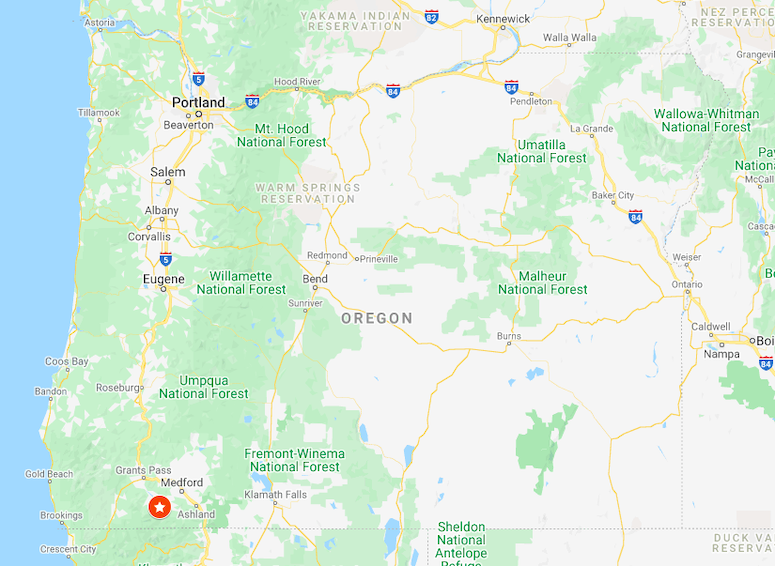
The Little Applegate River is located down in the far corner of SW Oregon, not far from the California border. This is a historic mining area with a lot of gold.
There are two public access sites along the Little Applegate River (tributary to the Applegate River which also has extensive gold deposits) where prospectors have a very good chance of finding some gold.
One site is called Tunnel Ridge Recreation Site. The other is called the Little Applegate Recreation Site. Both sites are large blocks of land situated next to each other, providing access to the river, as well as several gold-rich tributaries.
Getting There:
From Medford, head east on Highway 238. Continue for 28 miles to the town of Ruch. Turn south on Upper Applegate Road for about 3 miles, then turn onto Little Applegate Road. Continue for 11 more miles to reach the access sites.
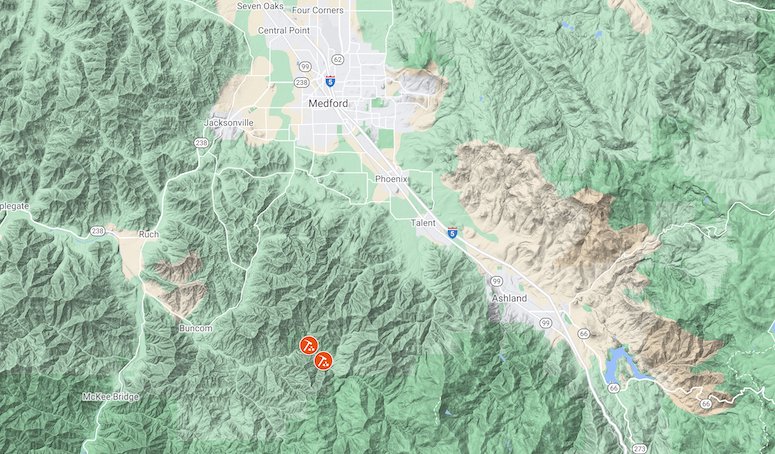
Both public access sites on the Little Applegate River are about an hour south of Medford.

There are lots of good places to pan. Make sure you are within the boundaries of the Recreation areas, since there are private lands and mining claims you need to be aware of in the surrounding mountains.

There are lots of good places to pan. Make sure you are within the boundaries of the Recreation areas, since there are private lands and mining claims you need to be aware of in the surrounding mountains.
Access:
Both the Little Applegate Recreation Site and the Tunnel Ridge Recreation Site offer good opportunities for casual gold prospecting. These are public sections of land that have been “withdrawn from mineral entry,”meaning you don’t need to worry about mining claims here.
For the more adventurous prospector willing to get off the roads and trails, there are other places in the nearby vicinity that have gold too. Much of these lands will have mining claims, but not all. There are public lands in the area that are unclaimed and contain gold that are less well-known, but you will have to do more research to find them.
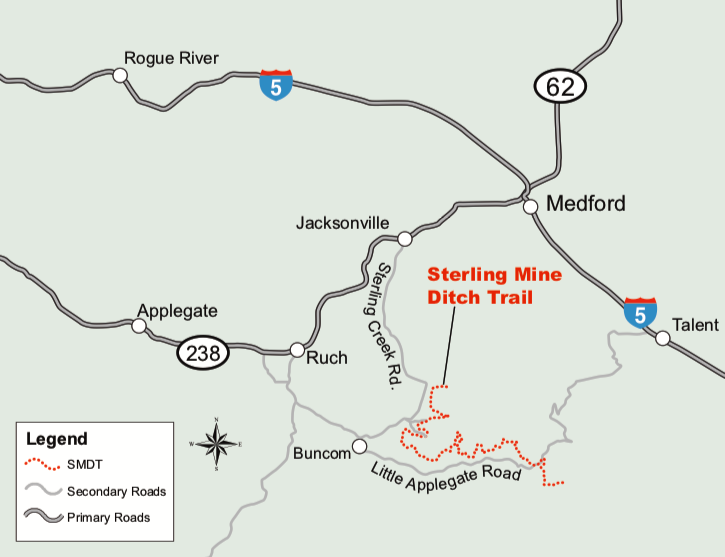
This map from the BLM shows the Sterling Ditch Trail provides access to many miles of ground between Sterling Creek and Little Applegate River.
History:
Most of the gold mined in this area has been placer gold. Several historically significant mines are found in the surrounding mountains of southern Josephine County. Most notable were the placer mines of Althouse Creek, Ferris Gulch, Humbug Creek, Keller Creek and Sterling Creek.
Hydraulic mining was done in earnest starting in the 1880s. Several different operations were scattered throughout these mountains, with the Sterling Mine being the richest in the region with several million dollars in gold to its credit. Other noteworthy hydraulic mines were the Layton Pearce, Spaulding and Old Sturgis mines.
Hydraulic mining blasted away hillsides using high-pressure jets of water. The water was rerouted from nearby creeks to bring in to the mines. Of particular interest to us is the Sterling Mine Ditch, which runs right through the Little Applegate Recreation Site and the trail that runs along side it provides good access to many gold-bearing drainages.
The Sterling Mine Ditch was cut back in the late 1870s. It was used to bring water from the headwaters of the Little Applegate River over to Sterling Creek for the hydraulic mine operations.
Read: The Fabulously Rich Mines of Jacksonville, Oregon
And: Gold Panning Locations on the Rogue River
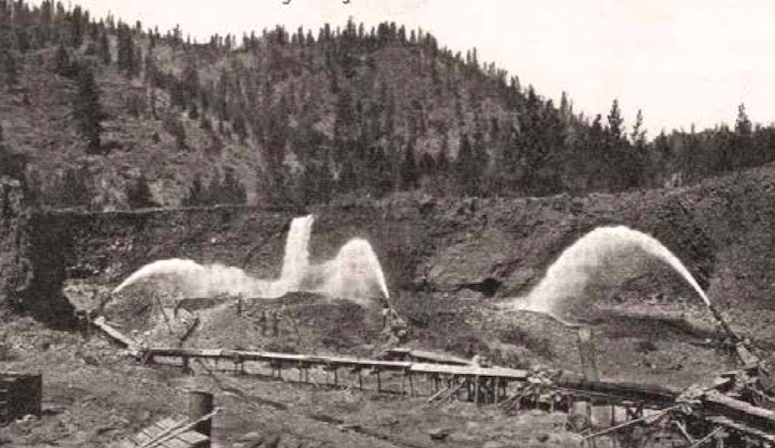
The Sterling Mine was just over the mountains to the north. It was the largest hydraulic mine in the region. Water was rerouted from the Little Applegate River to wash the gravel.
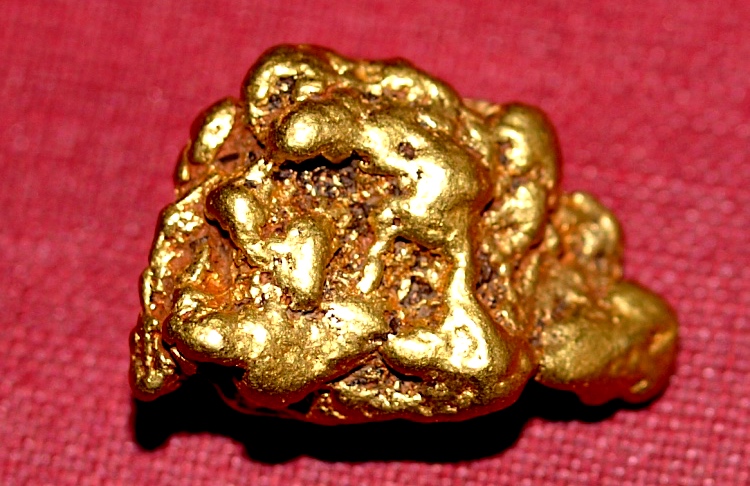
You can mostly expect to find small traces of gold dust in the bottom of your pan, but there have been some very large nugget found here over the years too.

